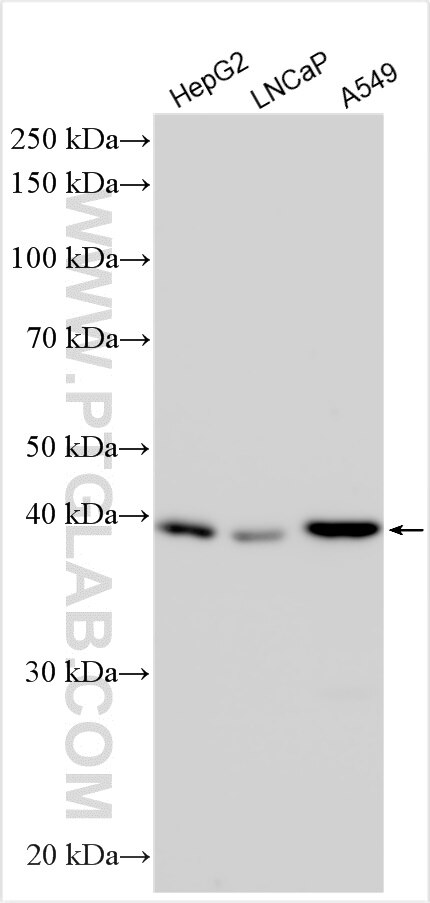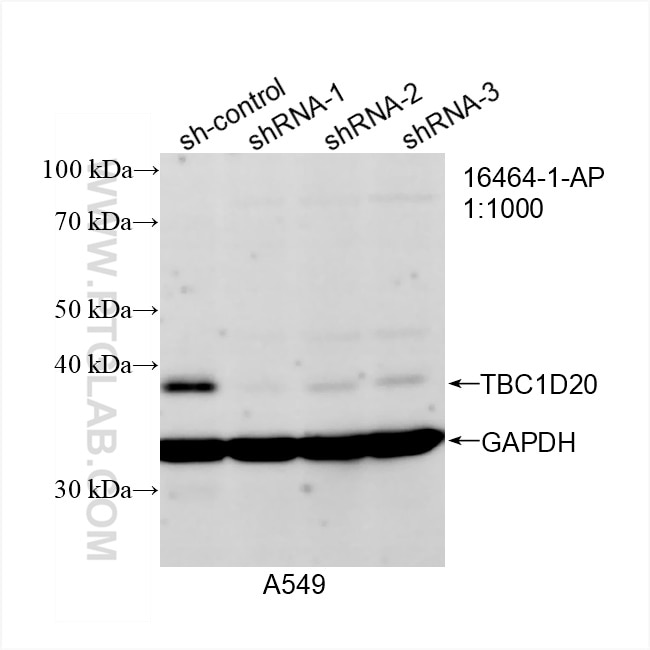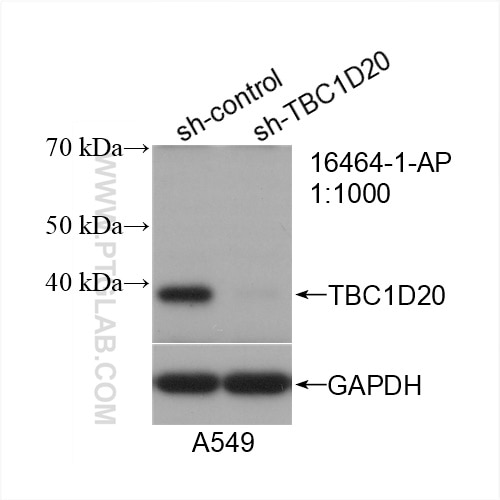Anticorps Polyclonal de lapin anti-TBC1D20
TBC1D20 Polyclonal Antibody for WB, ELISA
Hôte / Isotype
Lapin / IgG
Réactivité testée
Humain
Applications
WB, ELISA
Conjugaison
Non conjugué
N° de cat : 16464-1-AP
Synonymes
Galerie de données de validation
Applications testées
| Résultats positifs en WB | cellules HepG2, cellules A549, cellules LNCaP |
Dilution recommandée
| Application | Dilution |
|---|---|
| Western Blot (WB) | WB : 1:500-1:3000 |
| It is recommended that this reagent should be titrated in each testing system to obtain optimal results. | |
| Sample-dependent, check data in validation data gallery | |
Informations sur le produit
16464-1-AP cible TBC1D20 dans les applications de WB, ELISA et montre une réactivité avec des échantillons Humain
| Réactivité | Humain |
| Hôte / Isotype | Lapin / IgG |
| Clonalité | Polyclonal |
| Type | Anticorps |
| Immunogène | TBC1D20 Protéine recombinante Ag9539 |
| Nom complet | TBC1 domain family, member 20 |
| Masse moléculaire calculée | 403 aa, 46 kDa |
| Poids moléculaire observé | 38-40 kDa |
| Numéro d’acquisition GenBank | BC014983 |
| Symbole du gène | TBC1D20 |
| Identification du gène (NCBI) | 128637 |
| Conjugaison | Non conjugué |
| Forme | Liquide |
| Méthode de purification | Purification par affinité contre l'antigène |
| Tampon de stockage | PBS avec azoture de sodium à 0,02 % et glycérol à 50 % pH 7,3 |
| Conditions de stockage | Stocker à -20°C. Stable pendant un an après l'expédition. L'aliquotage n'est pas nécessaire pour le stockage à -20oC Les 20ul contiennent 0,1% de BSA. |
Informations générales
TBC1D20 belongs to a family of GTPase activator proteins of Rab-like small GTPases.TBC1D20 is an endoplasmic reticulum (ER) type II membrane protein with the TBC domain positioned in the cytosol. Depletion of this protein inhibits replication of the virus and HCV infection. Mutations in this gene are associated with Warburg micro syndrome 4.
Protocole
| Product Specific Protocols | |
|---|---|
| WB protocol for TBC1D20 antibody 16464-1-AP | Download protocol |
| Standard Protocols | |
|---|---|
| Click here to view our Standard Protocols |





